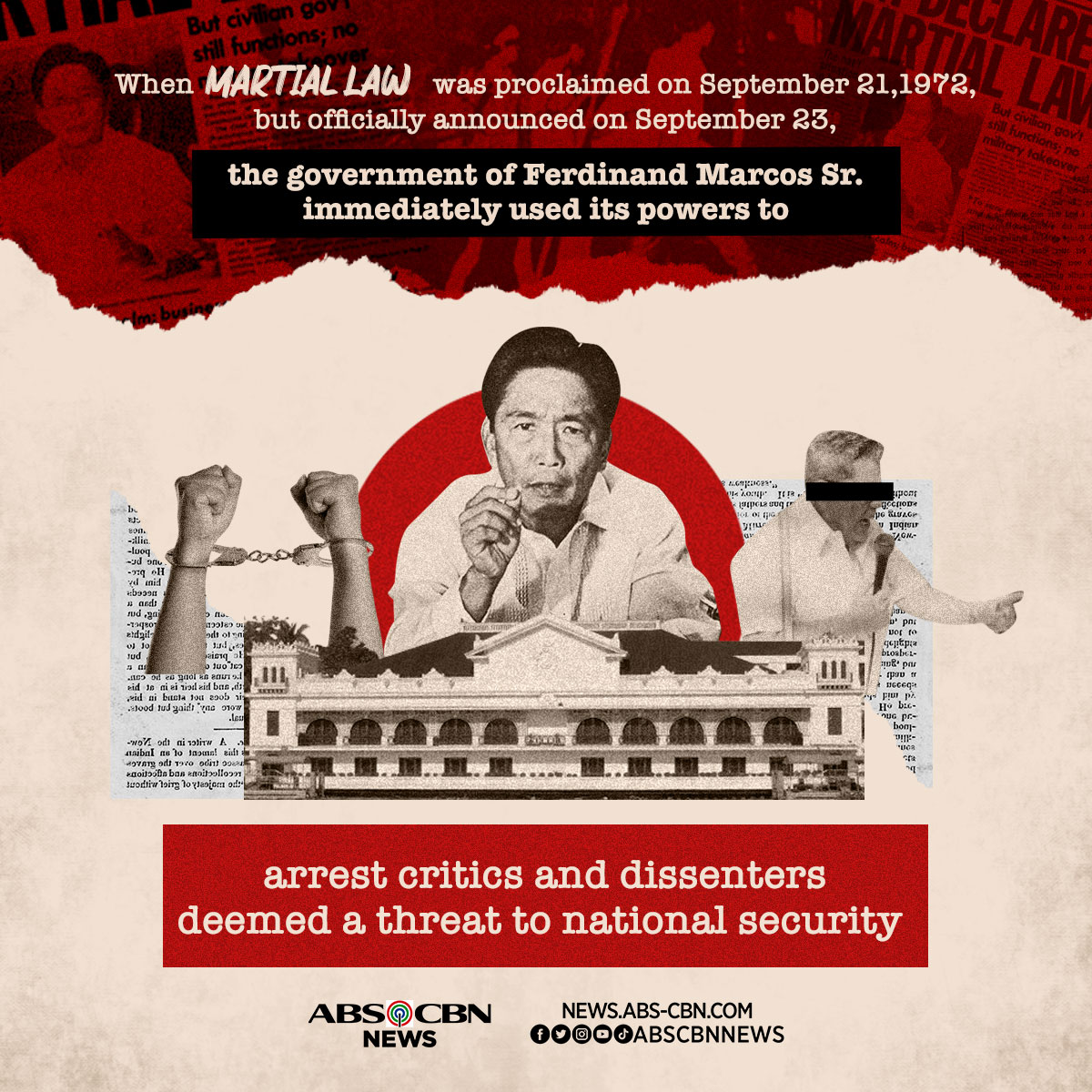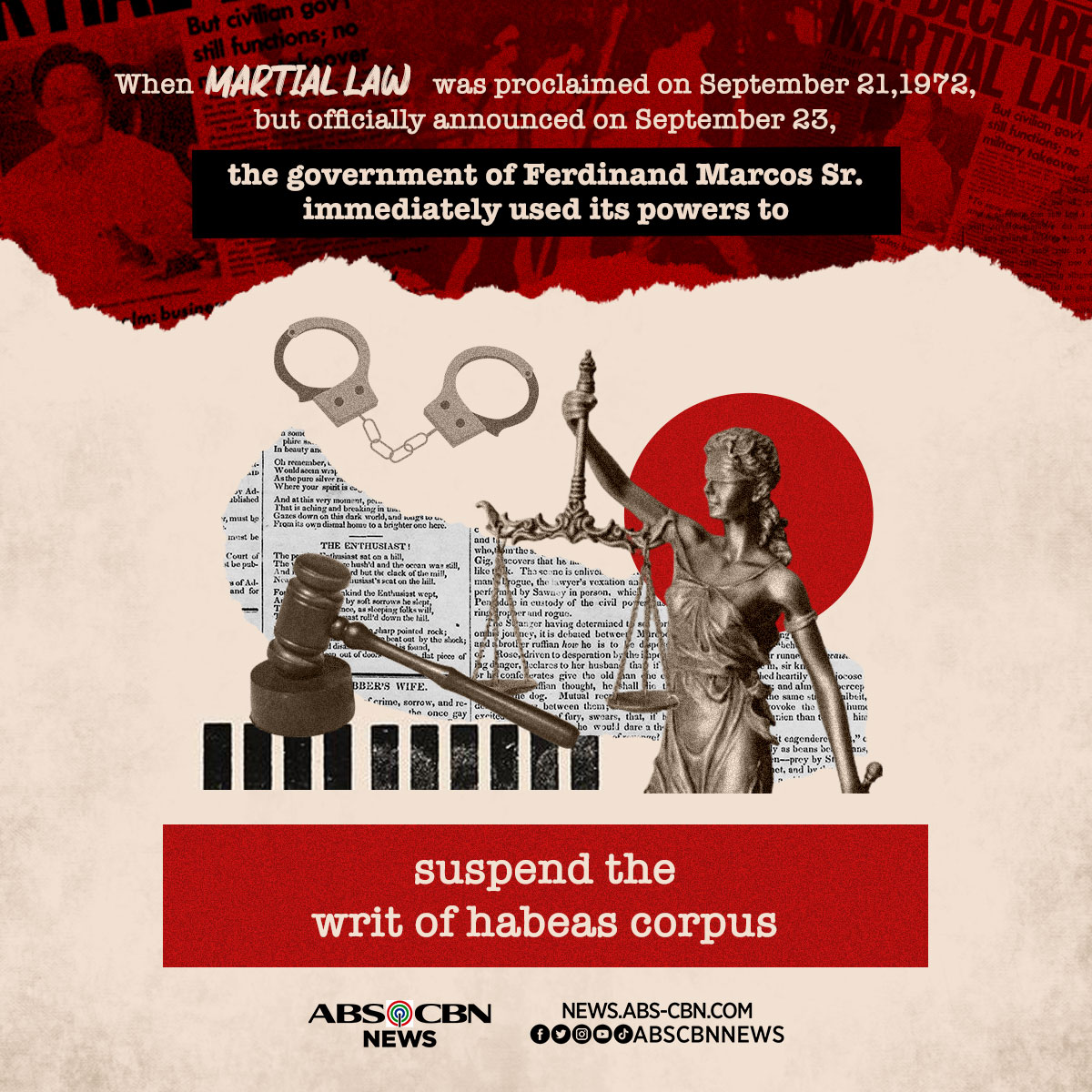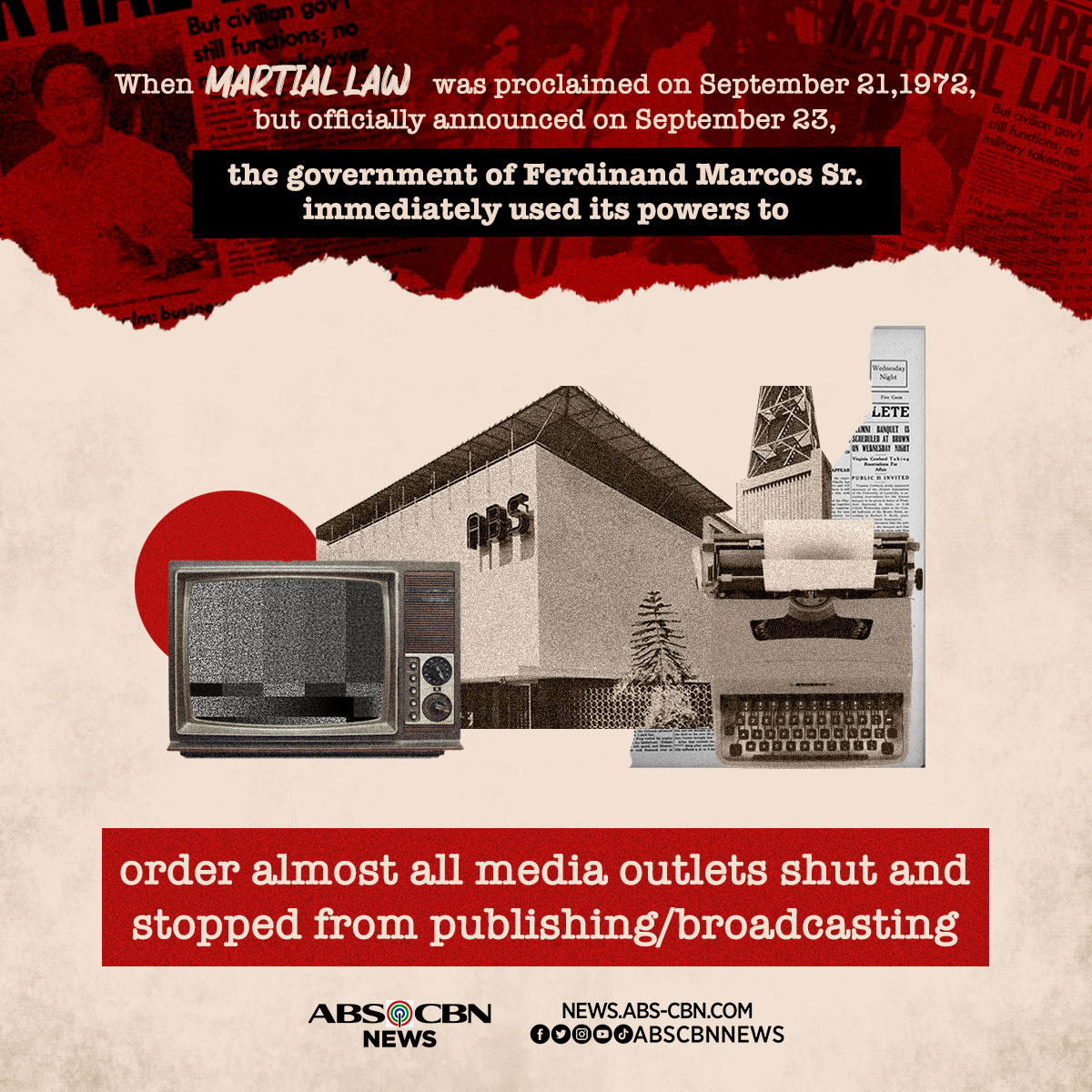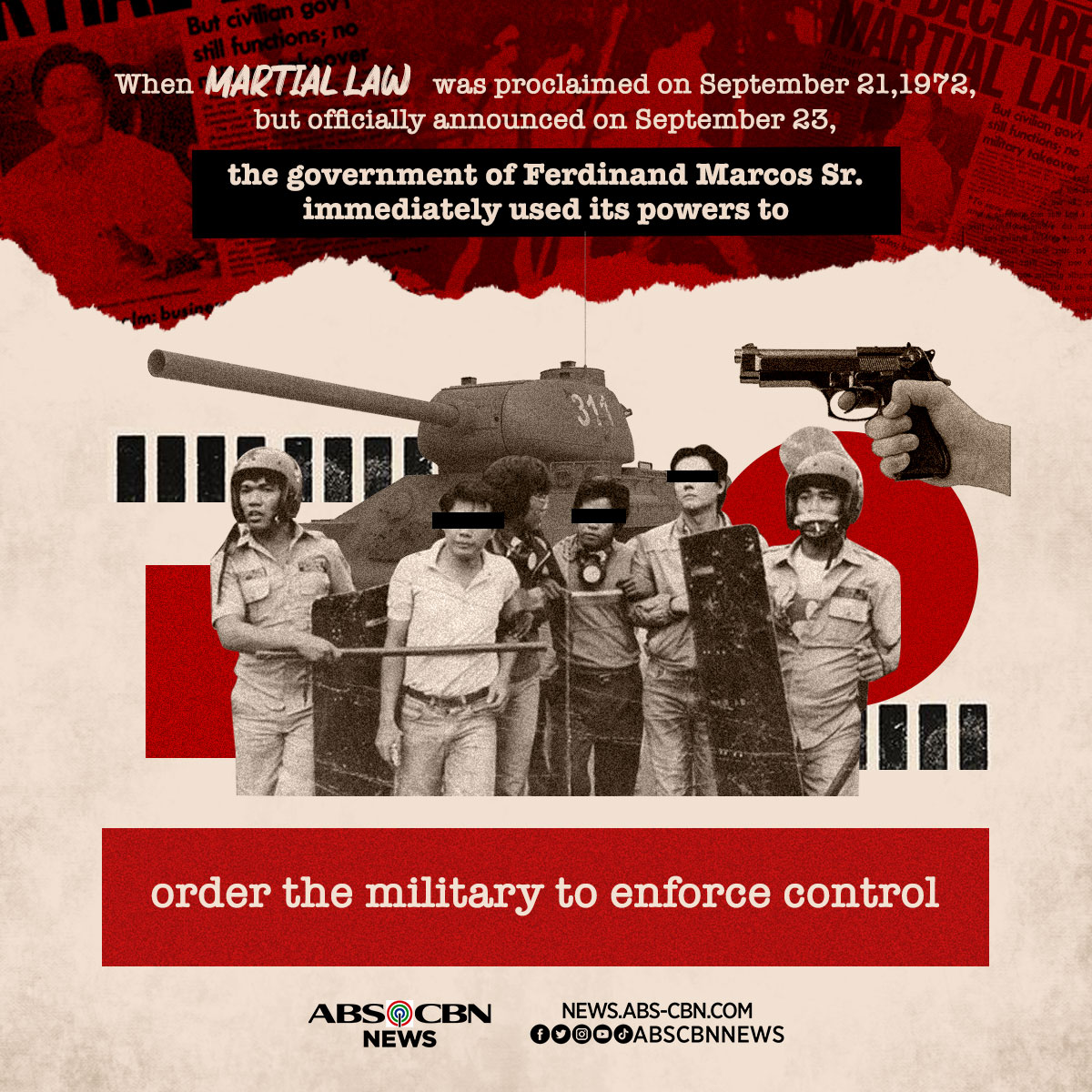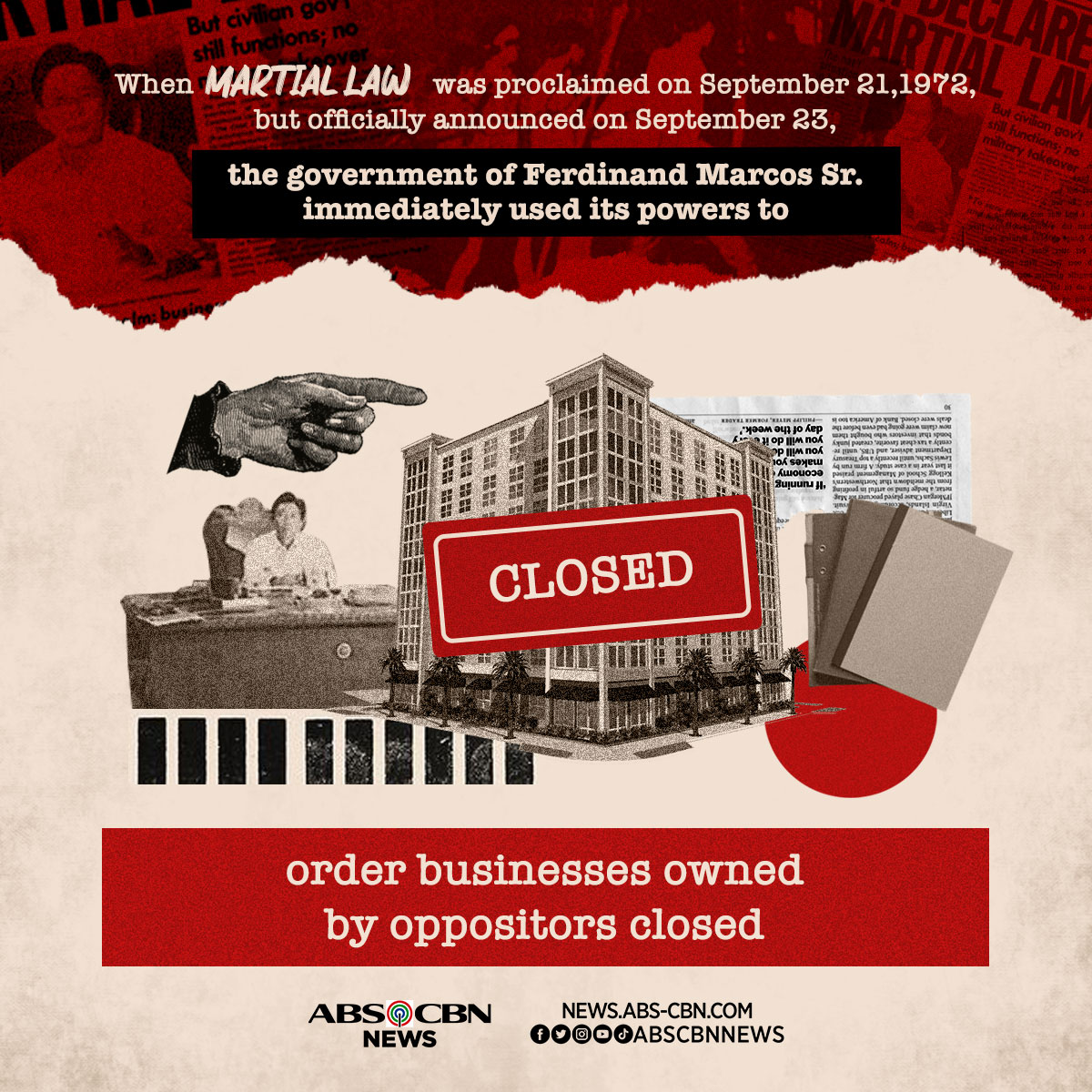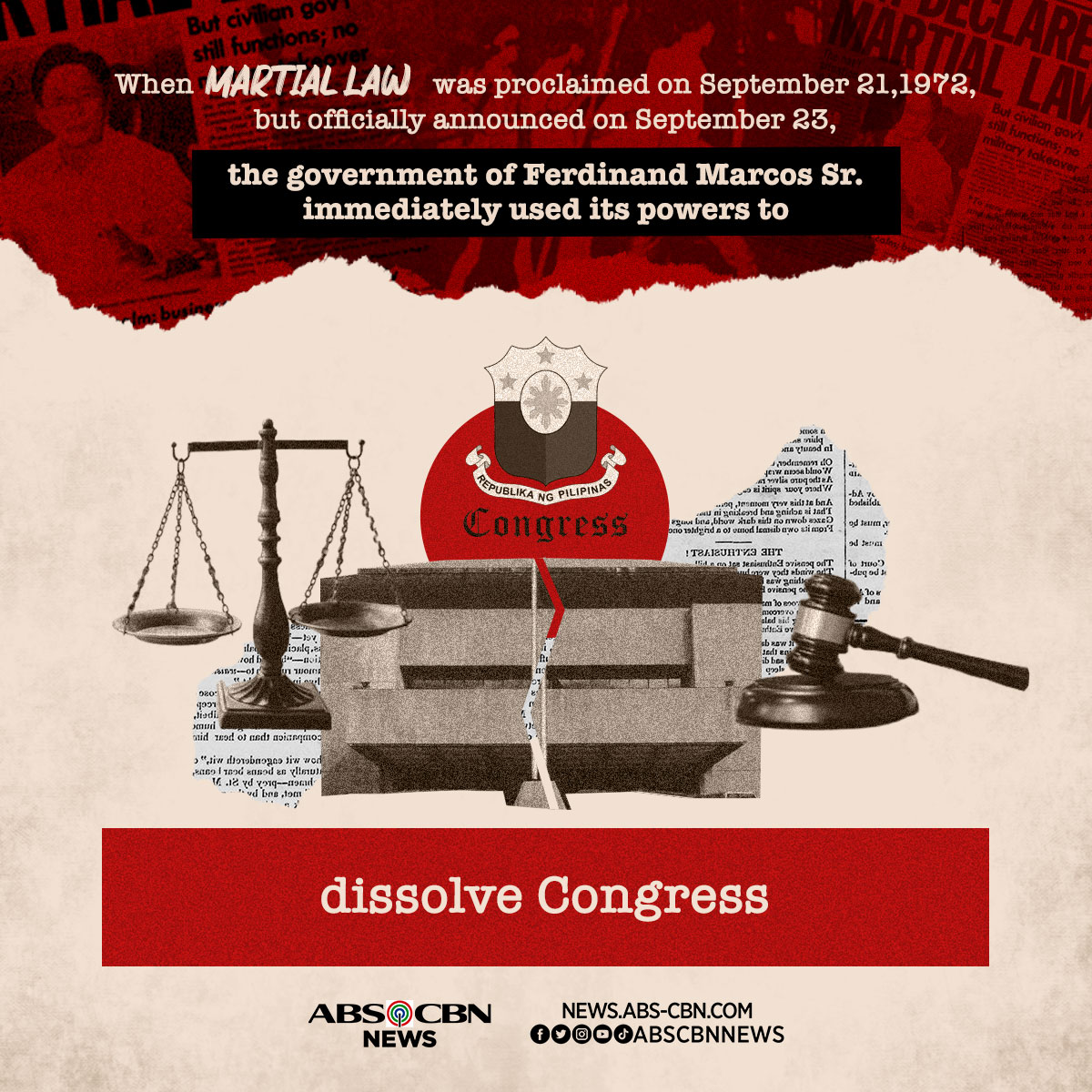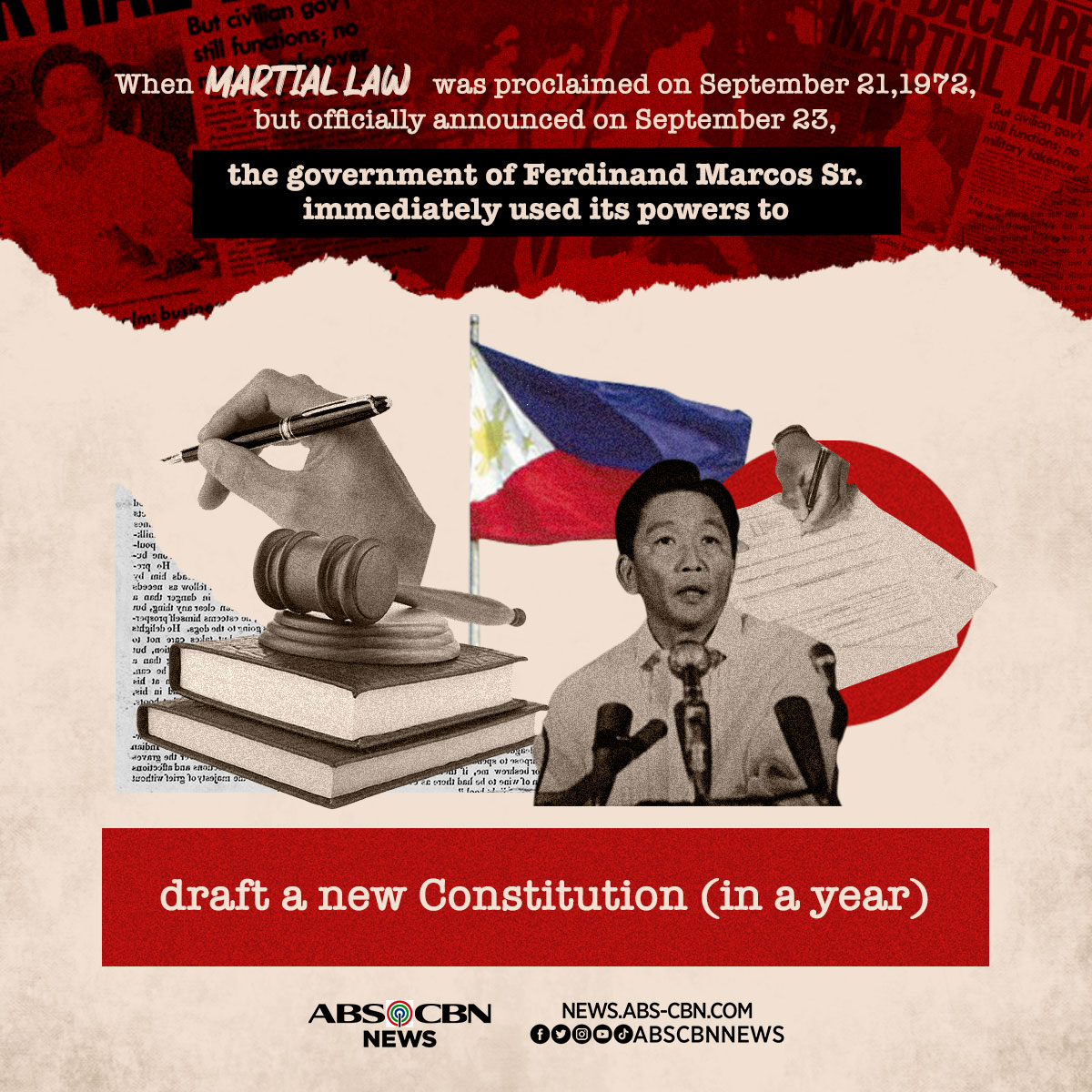Under General Order No. 2-A, Marcos authorized the military to arrest personalities believed to be part of a “conspiracy” to seize power.
According to the Official Gazette, Marcos, in a diary entry dated May 8, 1972, wrote about instructing the military to update its plans, including the list of personalities to be arrested.
By the time Marcos addressed the nation about his decision to declare martial law, several personalities, including opposition senators Benigno S. Aquino Jr., Jose Diokno, Francisco Rodrigo and Ramon Mitra Jr., had been arrested and sent to jail. Around 100 out of the 400 personalities on the arrest list were already detained in Camp Crame by 4 a.m. on September 23.
Approximately 8,000 individuals, which included 1971 Constitutional Convention delegates, journalists, students, labor leaders, and even a few members of the country’s elite families, were also arrested on the same day.
One of the most recognizable effects of the declaration of martial law was the suspension of the privilege of writ of habeas corpus, which allows law enforcers to detain people without undergoing due process. On August 21, 1971, Marcos signed Proclamation No. 889, which suspended the writ of habeas corpus “for the persons presently detained, as well as all others who may be hereafter similarly detained for the crimes of insurrection or rebellion”. He amended this through Proclamation No. 1081, justifying suspension of the privilege because of the existence of “an actual insurrection and rebellion in the country by a sizeable group of men who have publicly risen in arms to overthrow the government.”
Marcos issued Letter of Instruction No. 1 on September 22, 1972, wherein he ordered the military to take over and control all newspapers, magazines, radio and television facilities and other media of communications, to prevent their use for propaganda purposes against the government.
A total of 292 radio stations, 7 television stations, 11 English weekly magazines, 66 community newspapers, 4 Chinese dailies, 1 Spanish daily, 3 Filipino dailies, 1 English-Filipino daily and 7 major English dailies were prohibited from operating.
Only the newspaper Daily Express, TV Channel 9 and Kanlaon Broadcasting System were allowed to continue operation.
General Order No. 4, signed by Marcos on September 22, 1972, restricted the movements of people “during certain hours of the day in order to prevent unnecessary loss of lives or injury”.
The curfew was set at 12 midnight until 4 in the morning, wherein “no person in the Philippines shall be allowed to move outside his or her residence” unless authorized to do so.
Curfew violators were arrested and taken into military camps, only to be released no later than 12 o’clock after his or her apprehension, “unless there are compelling reasons or grounds for his or her continued detention”.
Marcos, through Proclamation No. 1081, placed the Philippines under martial law, and as commander-in-chief of the Armed Forces of the Philippines, ordered the armed forces to “maintain law and order throughout the Philippines, prevent or suppress all forms of lawless violence as well as any act of insurrection or rebellion and to enforce obedience to all the laws and decrees, orders and regulations promulgated by me personally or upon my direction.”
He also issued General Order No. 1, wherein he assumed full control of the entire government and the armed forces “in order to enable me to restore within the shortest possible time and thereafter to maintain the stability of the nation and to safeguard the integrity and security of the Philippines.”
Aside from shutting down TV/radio stations and newspapers, Marcos also ordered the takeover of public utilities and other companies.
Marcos issued Letter of Instruction No. 2 which ordered the military to take over the operation of the Manila Electric Company, the Philippine Long Distance Telephone Company, the National Waterworks and Sewerage Authority, the Philippine National Railways, the Philippine Airlines, Air Manila and the Filipinas Orient Airways, among other public utilities.
He also ordered the military to prevent the use of any privately owned aircrafts and watercraft, and to prevent any citizen from leaving the country.
Prior to the declaration of martial law, leaders of the Senate and the House of Representatives were aware of Marcos’ plan to declare martial law. Congress was supposed to adjourn on September 21, but the leaders of the Senate and the House decided to postpone the adjournment to September 23, the same day that Marcos made his announcement.
Several opposition leaders, including senators Benigno S. Aquino Jr., Jose Diokno, Ramon Mitra Jr., and Francisco Rodrigo, were arrested on the night of September 22.
Days before the scheduled reopening of the Senate and the House of Representatives under the 1935 Constitution, Marcos promulgated the 1973 Constitution, effectively abolishing the Congress and replacing it with a unicameral legislature, which would be established in 1976.
Before Marcos declared martial law, a constitutional convention was already in the process of drafting a new constitution. The delegates were elected in 1970 and the constitutional convention convened on June 1971. Eleven opposition delegates were arrested upon the declaration of martial law.
The convention finished their work and submitted it to Marcos on December 1, 1972. He then submitted it for ratification in early January 1973. Foreseeing the failure of direct ratification, Marcos issued Presidential Decree No. 86, creating citizens assemblies to ratify the new constitution by means of viva voce (oral) vote in place of secret ballots. Marcos announced that the 1973 Constitution had been ratified and in full effect on January 17, 1973.




